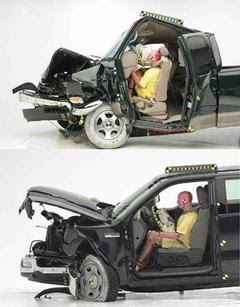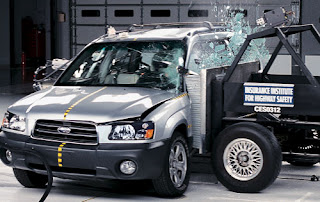Ken Bensinger of the Los Angeles Times reported that: For GM, pickups and SUVs have been deeply problematic for some time. But by far its worst division has been Hummer. Through April, Hummer was the worst-performing vehicle brand in the country, with sales down 29.6% from a year earlier, putting it below runners-up Mercury, Chrysler and Bentley.
"At this point, we are considering all options for the Hummer brand," Wagoner said. "Everything from a complete revamp of the product lineup to partial or complete sale of the brand."
No possible buyer has been named for the division, which was for a few years -- when gasoline cost less than $3 a gallon -- one of GM's strongest. Last week, GM stock hit a 26-year low, falling to $17.38. At 11:15 this morning [June 3, 2008], the stock was unchanged at $17.43.
This is straight out of necessity because the sales slump that the Hummer brand hit will ultimately strike GM very hard if it continues to worsen. And it came at a highly inopportune time – the release of the 2008 Hummer H2 and the highly-anticipated debut of the 2009 Hummer H3T and the Hummer HX, which was one of the attention-catchers during the 2008 NAIAS. But it’s inevitable.
According to a press release on Al Jazeera online, Earlier this year GM reported a $38.7 billion loss for 2007, the largest ever annual loss for an automotive firm, following a slump in the North American market due to US economic turmoil.
It also said it was to offer voluntary redundancy or early retirement options to about 73,000 unionised workers in a bid to cut labour costs.
And in September last year more than 74,000 GM workers went on strike over healthcare costs and job security, returning to work after a deal was struck between the company and the United Auto Workers union.
The four plants to be closed are in Oshawa, Ontario, in Canada; Moraine in the US state of Ohio; Janesville in the US state of Wisconsin and Toluca in Mexico.
An estimated 2,500 workers at each of the four facilities will be affected, Wagoner told AP.
GM’s sales during the month of May dropped about 28%, and the decision to close four truck plants in order to focus on more consumer-friendly cars is a step in the right direction, albeit a highly disappointing one for Hummer fans.
Mark Fellows of the Michigan Business Review wrote: The moves will save the company $1 billion per year starting in 2010. Combined with previous efforts, GM will have cut costs by $15 billion a year, Wagoner said.
"From the start of our North American turnaround plan in 2005, I've said that our goal is not just to return GM to profitability, but to structure GM globally for sustained profitability and growth," Wagoner said in his announcement.
"Since the first of this year, however, U.S. economic and market conditions have become significantly more difficult. Higher gasoline prices are changing consumer behavior, and they are significantly affecting the U.S. auto industry sales mix," he said.
It seems the effect of the rising oil prices as well as the weak economy is snowballing. First there was Ford, and now GM. Chrysler and even Toyota is not far behind. The damage can no longer be averted. All they can do is a lot of damage control.




